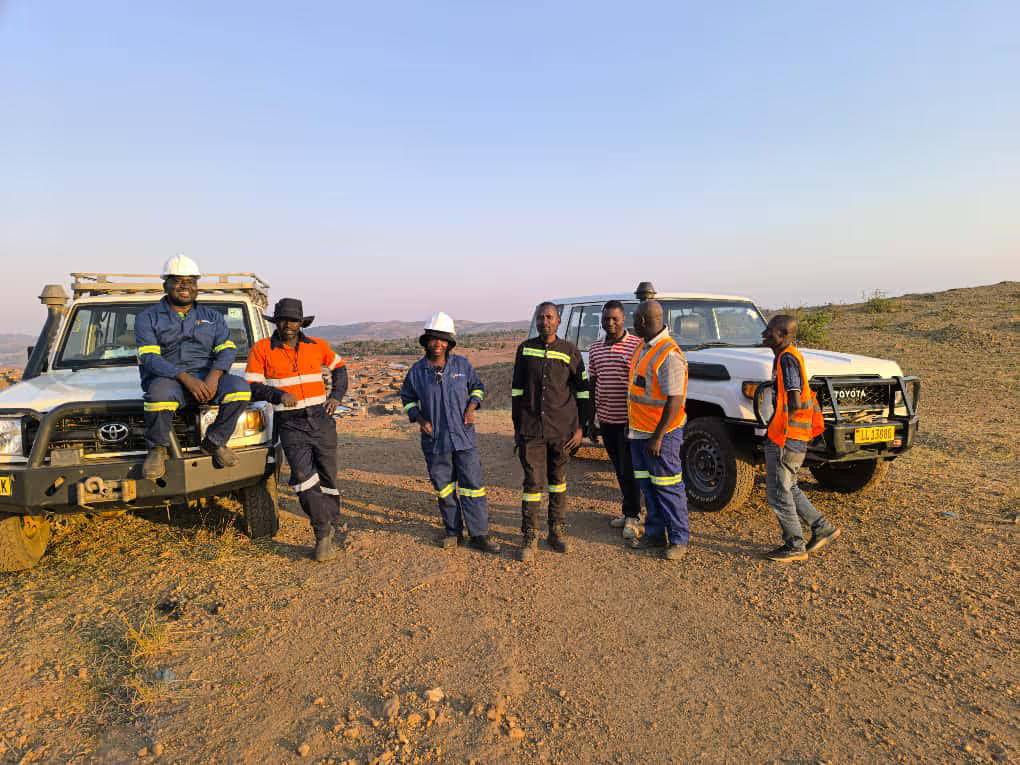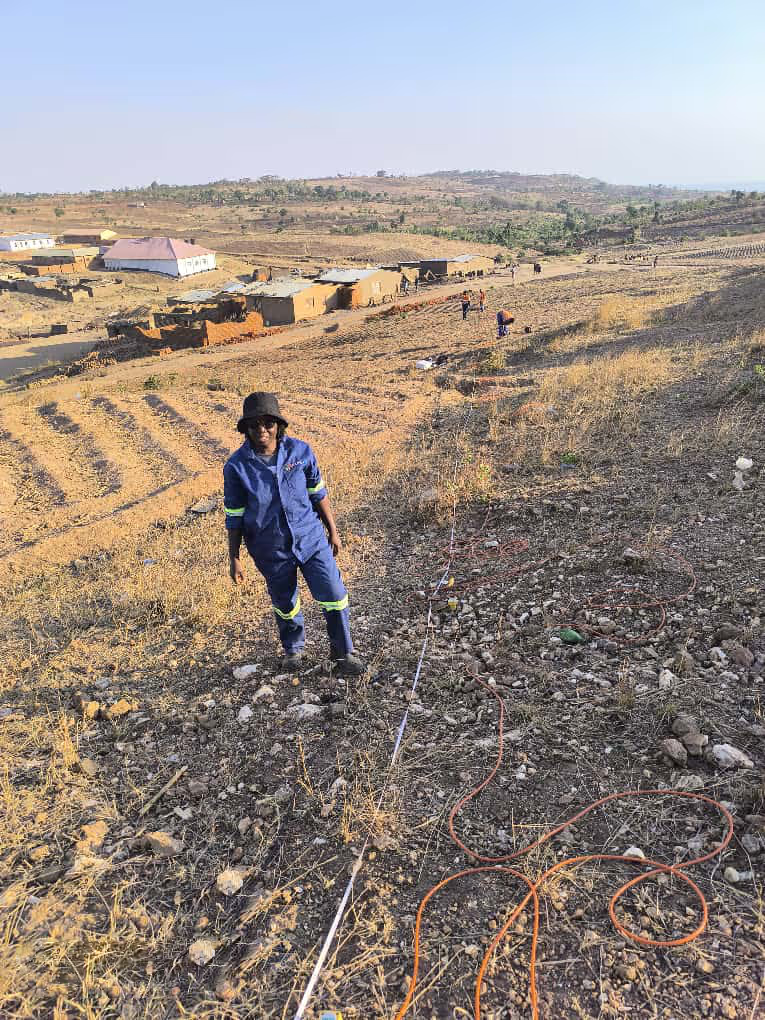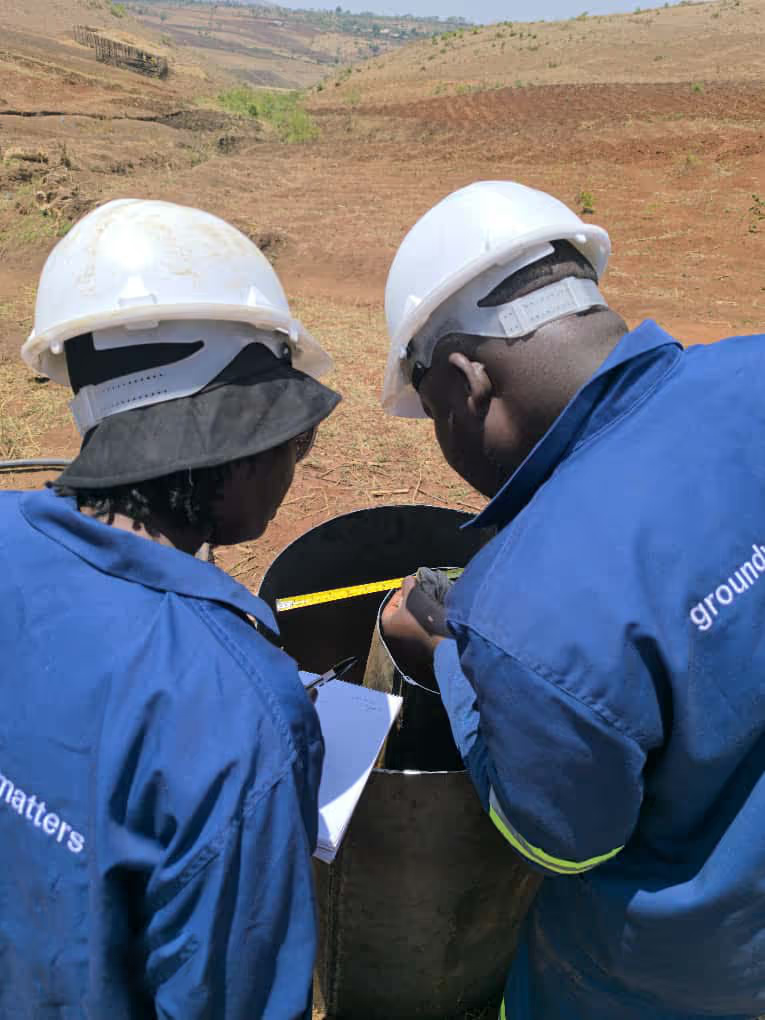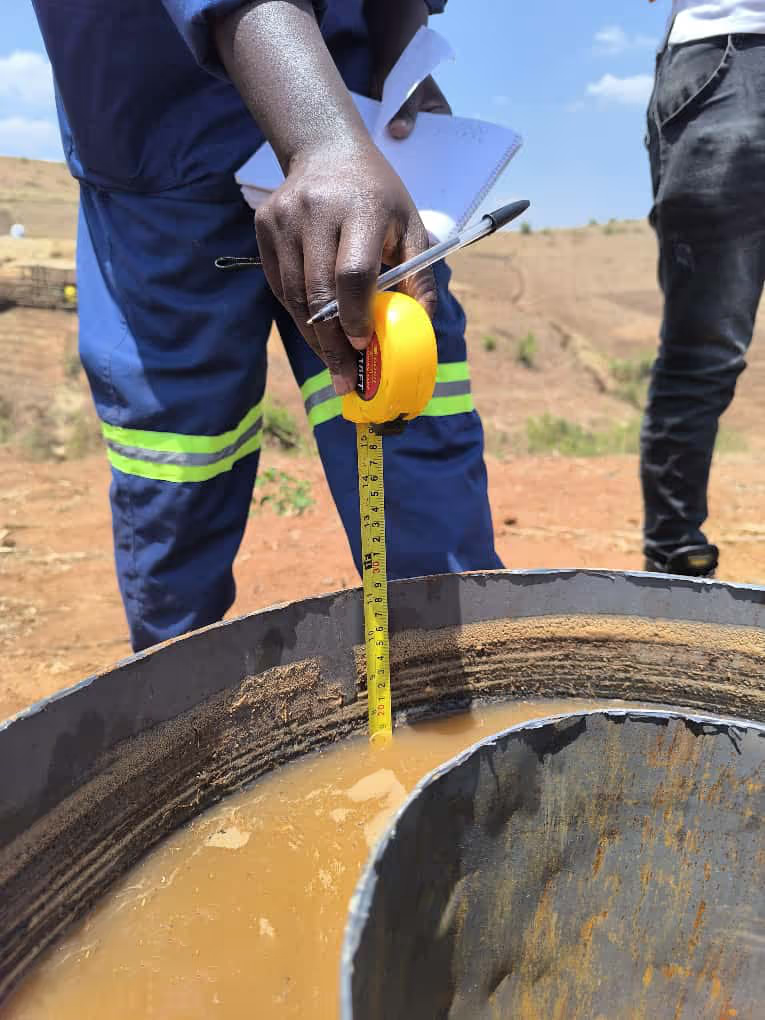One of the things I love most about my job is that every day I walk into the office knowing I will be working on something connected to groundwater. It might be monitoring water table levels, working with citizen scientists, or supporting field teams, but whatever it is, it is always about groundwater. That is my element. It is what I trained for and what I am passionate about. Few organizations in Malawi dedicate themselves exclusively to this invisible yet vital resource, which makes my work at BASEflow deeply fulfilling.
Lately, I have been especially excited about Managed Aquifer Recharge, an idea that has been talked about for years in Malawi but never been put into practice. So when I got the chance to help pioneer a Managed Aquifer Recharge project around Dzaleka Refugee Camp, in partnership with UNHCR and Welthungerhilfe, I was excited. This was an opportunity to do something new for Malawi, something that could help secure groundwater for the future.
Managed Aquifer Recharge is the intentional addition of water to underground aquifers to store excess surface water for later use. It helps replenish depleted groundwater and improves both water quantity and quality. In Dzaleka, where tens of thousands depend on groundwater for household and farming needs, boreholes have multiplied and abstraction has intensified. The result is falling water levels and growing pressure on an already stressed aquifer. Managed Aquifer Recharge offers a potential solution, restoring what is being drawn out faster than nature can replace it.
But Managed Aquifer Recharge is not a one-size-fits-all solution. The right recharge structure depends on the topography, soil type, and catchment conditions. To design effectively, we must conduct technical assessments to identify where and how recharge will work best, whether through infiltration basins, check dams, percolation ponds, or other systems.
That is what my team and I set out to do one morning, a simple site assessment to help us decide which recharge technology to pilot. It was supposed to be a normal day in the field. It was not.
When we arrived at the site, we were met not with curiosity, but confrontation. A crowd had gathered, and the mood was tense. Voices overlapped as people insisted we stop what we were doing. Within minutes, it was clear we were not welcome.
It was the first time I had ever experienced such hostility in the field. My heart raced as I tried to understand what was happening. Eventually, we had to leave without collecting a single data point. The experience was frightening and humbling.
Later, through discussions with partners, we realised this was not really about access or ownership. It was about perception. Communities are used to projects that bring immediate, visible benefits, a borehole, a school, a bridge. Managed Aquifer Recharge, on the other hand, is invisible. You cannot see the water being stored underground, and its benefits unfold slowly, sometimes months or years later. For people living on the edge of survival, that delay can feel meaningless.
We had conducted a short sensitisation meeting before visiting, but it clearly had not been enough. We had shared information, but not understanding. People needed education, not just awareness. They needed to grasp how recharge protects the boreholes they rely on, and how the water they draw today depends on what is replenished tomorrow.
That realisation was a turning point for me. Technical expertise alone was not enough. We had to translate it into something people could relate to.
That day taught me several valuable lessons.
First, community engagement cannot be a checkbox exercise. It has to be continuous dialogue, listening, explaining, and connecting technical ideas to the daily realities of water users. Managed Aquifer Recharge may be scientifically sound, but unless people see how it fits into their lives, it will always feel abstract.
Second, integrating livelihood components is critical. Some recharge technologies, such as sand dams or check dams, naturally support income-generating activities like small-scale irrigation or fish farming. Others may not, but it is our responsibility to design them in ways that offer tangible benefits. When people can associate recharge with better crops or more reliable income, they are far more likely to support and protect it.
After that experience, we regrouped with our partners to reflect on what had happened and how we could do better. We agreed that for this project to succeed, we needed to move at the pace of the people, not just the pace of the science. That meant taking more time to listen, to engage, and to understand the concerns of the communities, i.e. shifting from technical implementation to relational collaboration. This would ensure that communities understood the “why” behind our work and could see themselves as part of it.
I went home that evening emotionally drained but profoundly reflective. Fieldwork is unpredictable. It humbles you, frustrates you, and teaches you patience. But it is also where the most important lessons come from.
That day, I walked away shaken, but wiser. We’ll see what tomorrow brings.
LIke what we do ?
Please click the Download button below to get the manual and start contributing. Or if you like what we are doing and would like to support our work, click the Donate button.






